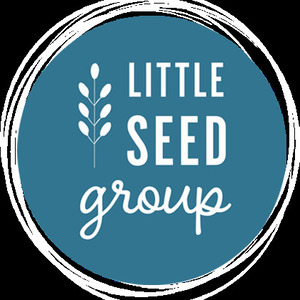Insights
INSIGHTS
All Topics
How to make digital communications accessible
12 Aug 2021by Annabel Mulliner
Our guest contributor Annabel Mulliner discusses some of the ways charities can ensure digital communications are accessible for those with disabilities
Annabel Mulliner represents Little Seed Group, which aims to help organisations thrive through marketing, PR, and social media services.
Interacting with digital communications is something we can all take for granted. The online world is a huge part of our lives, with the average adult spending up to 6.4 hours on the internet every day. But reading an email or scrolling through Twitter is not something all internet users can do so easily.
Things like assistive technology (AT) software can improve access to digital communications for individuals with visual impairments or learning disabilities. And there are measures that can be taken on an organisation’s end to make digital communications accessible. With the shared aim of doing good, all charities should be looking to lead the way in accessible digital communications.
Write alternative text for images
Wherever you use images in your communications, you should also be using alternative text. Alt text can be read out by AT software, letting a user know what an image is and what it looks like.
All mainstream social media platforms have alt text functions. Some, such as Facebook, even generate alt text automatically. But user-generated alt text is always going to be more accurate than auto-generated.
Website CMS systems like WordPress also usually have alt text functions. It takes thirty seconds to add alt text to an image and it can make all the difference to a visually impaired user’s experience.
Make use of multimedia
Using multimedia to complement plain text can improve both engagement and accessibility. Audio, video, and infographics can assist in accessible communications. This can be as simple as providing audio versions of emails and blog posts.
On average, users retain 95% of a video’s message compared to 10% of a text’s message. This shows the power of multimedia in engaging all users, not just those with disabilities.
As well as boosting accessibility, infographics and video content can be hugely beneficial in your charity’s marketing strategy. In fact, videos generate up to 1200% more shares than image and text content combined.
Ensure your designs are accessible
Do your website and social media use contrasting colours and readable fonts?
Though an eye-catching and impressive design might be your priority, designs should be visually accessible and easy to engage with.
You may want to consider adding a tool to your website that allows users to change font sizes or background colours to suit individual needs. We recommend working with a web design agency that understands how to develop inclusive and accessible websites.
When creating infographic social media posts, present information logically. Order content in a list instead of a less linear format, for example, which will help people with learning disabilities like dyslexia to follow your message.
Use closed captions for videos
Of course, multimedia can be a double-edged sword, as individual’s specific needs mean that they will be more and less able to engage with different types of content.
If you go down the route of video content, use closed captions to ensure people with hearing impairments are able to engage.
Many non-hearing-impaired users watch videos on mute, meaning that captioned videos receive much more engagement than those with uncaptioned videos.
Use capital letters in hashtags
This may sound minor, but failing to use capital letters in hashtags means AT software won’t be able to properly read out your hashtags. This is because AT software is unable to make out the beginning and end of each word.
Uncapitalised hashtags can also lead to unfortunate misunderstandings. Take Susan Boyle’s hashtag #susanalbumparty, for example. If only her publicity team had capitalised as #SusanAlbumParty, they could have avoided a scandalous misunderstanding.
Hashtags can play a vital role in social media communications. For example, they can be used to create fundraising challenges or encourage activism. By capitalising your hashtags, you will ensure maximum engagement with your campaigns.
Maintain a clear writing style
Accessibility doesn’t begin and end with how information is presented on a page, as you should also ensure that your communications are written in an accessible and clear voice. Using plain English and avoiding jargon is not only more user-friendly but can be much more engaging.
In fact, readability is so important that it factors into Google search engine rankings. This is because readability is a huge part of user experience. Consider this when writing any copy, whether that be via email, blog post or social media.
Create accessibility guidelines
Make accessibility a key consideration in your branding guidelines, to ensure consistency and demonstrate your commitment to accessibility long-term. This should let your social media team to follow practises such as those described above and ensure that any rebranding is designed with accessibility in mind.
But more than this, you should strive to keep on top of the latest developments in accessible communications. Keep up-to-date with new social media updates and new software to ensure you don’t miss new opportunities to improve accessibility.
But above all else, listen to your disabled beneficiaries and donors. Take suggestions and feedback on board. Make it a company policy that you will continue looking for ways to be more inclusive.
This is in no way a comprehensive guide to making your charity’s digital communications accessible – that would take up an entire book. But these simple and effective steps will take you in the right direction towards inclusivity.
Annabel Mulliner
More on this topic
Recommended Products
Featured Products
27 Jan 2025by Laura Stanley
Charity Digital Exchange: Grow your charity with AWS
21 Jan 2025by Charity Digital
Building strong data foundations before AISponsored Article
Our Events
Charity Digital Academy
Our courses aim, in just three hours, to enhance soft skills and hard skills, boost your knowledge of finance and artificial intelligence, and supercharge your digital capabilities. Check out some of the incredible options by clicking here.















